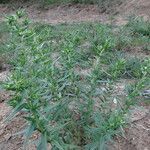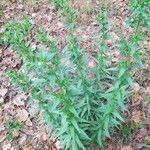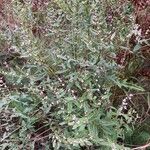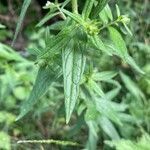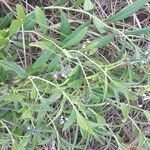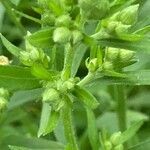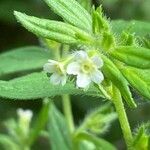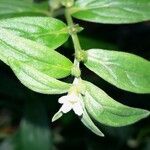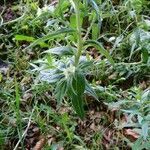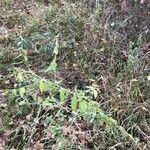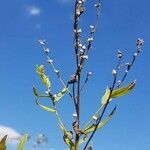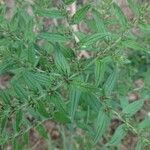Erect, usually much branched perennial to 1 m, the principal internodes usually less than 2 cm; lvs subsessile, lanceolate to oblong or oblanceolate, 6–15(–20) mm wide, gradually acute, with 2 or 3 conspicuous lateral veins on each side; fls solitary in the crowded upper axils, 3–15 mm apart at maturity, white or nearly so, 4–5 mm; cal-lobes nearly as long as the cor; nutlets ovoid, 3–3.5 mm, white to pale brown, shining, smooth or sparsely pitted; 2n=28. Native of Eurasia, intr. as a weed of waste places from Que. to Minn., s. to N.J. and Ill. May–Aug.
A herb. It keeps growing from year to year. It grows 80 cm tall. The stems are usually branched. The leaves are 6-7 cm long by 1-2 cm wide. They are broadly sword shaped. The flowers have short stalks and leafy bracts. The fruit are nutlets 3-4 mm long.
